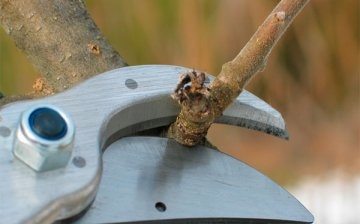Pruning apple trees throughout the year
For the formation of a correct and even crown of apple trees, a better supply of nutrients to the fruits, and therefore ultimately increase their yield, timely and correct pruning of apple trees is necessary. Young trees should be pruned annually in the spring and fall.
Its implementation in the spring (before the onset of sap flow and the appearance of buds, but subject to positive temperatures) is due to the need to remove branches that are frozen in winter and form a crown. In the fall, the time for pruning comes after the foliage has fallen. Cut off old, spoiled, broken and rotten branches. But it is better not to do this after the onset of frost in order to avoid freezing of the bark around the place where the branches are cut and, as a result, long overgrowing of wounds.
Occasionally, to ensure the best access of light to the apples, pruning of apple trees takes place in the summer. Winter pruning of apple trees is easier to tolerate due to their dormancy. But it is suitable mainly for southern warm regions, in which there is no likelihood of damage to the bark of trees, fragile from frost.
Autumn pruning should be done in the following sequence:
- first of all, get rid of large broken and dry branches;
- next is the removal of the weakest branches from branches located in excessive proximity to each other;
- followed by cutting off branches growing at an acute angle;
- all damage to the apple tree that appeared during the pruning process is smeared with a garden varnish, or oil-based paint;
- finally, the cut branches must be collected and burned.
Sometimes gardeners feel sorry for their trees or want to see them large and spreading and therefore do not prune them. But this is wrong, because later you can lose crops and get trees overgrown with dry branches.



